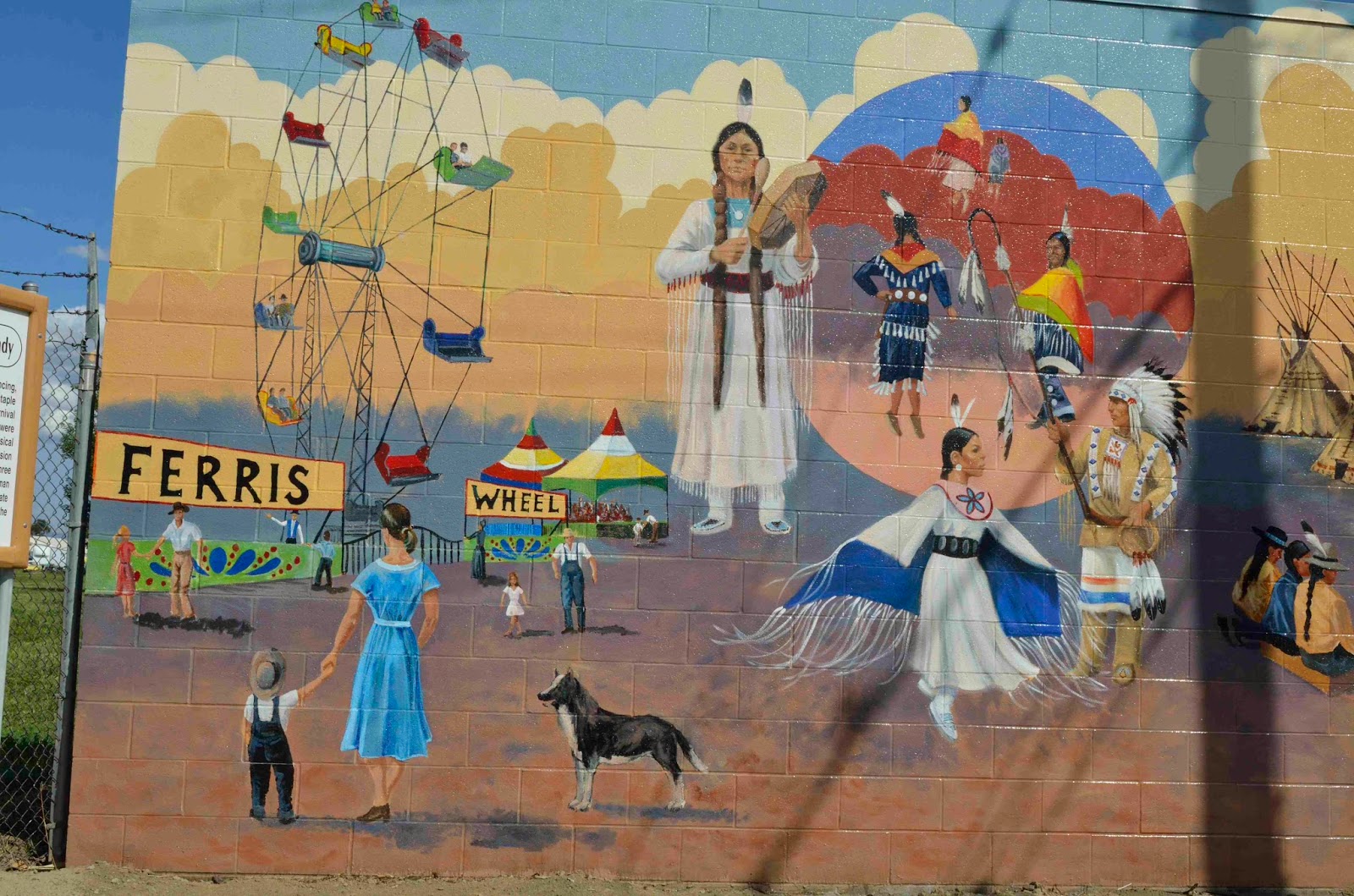 We thought that the murals in Philly were unique but this small Washington town is really known for its murals. Begun as the Mural-in-a-Day project in 1989, there are, as of June 2014, seventy-five murals all around the town. The artists are professional Western artists from the US and Canada. Many times they work as a team to create a mural. The murals portray the history of the area and the significant women and men who contributed to its development. The paintings fill sections of walls, entire buildings and even windows. You don’t walk down the street but, instead, pirouette every few feet because murals are in front, behind, above and across from where you are.
We thought that the murals in Philly were unique but this small Washington town is really known for its murals. Begun as the Mural-in-a-Day project in 1989, there are, as of June 2014, seventy-five murals all around the town. The artists are professional Western artists from the US and Canada. Many times they work as a team to create a mural. The murals portray the history of the area and the significant women and men who contributed to its development. The paintings fill sections of walls, entire buildings and even windows. You don’t walk down the street but, instead, pirouette every few feet because murals are in front, behind, above and across from where you are. We tried to follow the map of murals but kept veering off path when one of us spotted a mural in another direction. Then we would retrace our steps and find murals we had missed the first time. We had a wonderful time but did not find them all and hope to try again in the future.
The Toppenish Trading Company above was one of our favorites.
The second floor of the Logan Building shows some early “working women.”
Pow Wow, Ferris Wheel, & Cotton Candy shows scenes from past rodeos but here are a few more of the ones we thought were very impressive.
The small Northern Pacific Railway Museum is housed in a former train depot.
It is run by volunteers who have spent decades restoring rolling stock like this locomotive.
The museum prides itself on displaying railroad items within the context of their use. This is the equipment and spare parts hold from below the sleeping area of a caboose.

A volunteer woodworker and retired physician, told us the colorful tale of obtaining the furnishings for this caboose. It was privately owned by a billionaire in Seattle who had gutted it and used it for entertainment during Sonic’s games. He then planned to use it as a private bordello for his sons. When his wife learned of this, she contacted the museum and said they could have anything that they wanted if they just picked it up. The caboose is now restored to its proper purpose of providing living quarters for the conductor and rail observation crew. The volunteer shared the lesser known facts like that the “hooch” was stashed in hidden compartments in the cooler and the stove, and once in the toilet.
Anne enjoyed blowing the horn.
This small town has a population consisting of 85% Hispanic, 5% Native American and 10% Caucasian. Needless to say, the best place in town for lunch was Senor Villa, as recommended by the train volunteer.
The Yakama (tribal spelling) Nation Museum and Cultural Center is located next to their casino but we were interested in their tribal history. Exhibits show the peoples’ relationship with the plants and animals of the Columbia River Plateau. An exhibit on learning from the elders emphasizes that one does not expect respect but earns it.
The sweathouse and tule winterlodge are life size.

An exhibit of famed Native Americans include Sequoia, chief of the Cherokees. He observed that the European invaders of the early 1700s had a written language. He knew his people had to develop the skills to compete with the Europeans so he developed a Cherokee alphabet based on Greek, Hebrew and English. Unfortunately, that did not help his tribe gain equality as shown in their exile known as the Trail of Tears. What surprised we four Californians was that Sequoia National Park was named in his honor. We had never even thought about it.









No comments:
Post a Comment